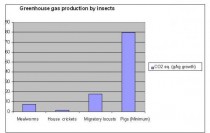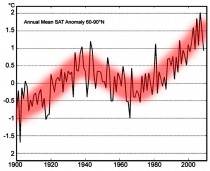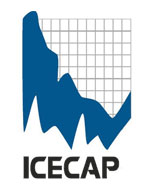Edible Insects Produce Smaller Quantities of Greenhouse Gases Than Cattle
Science Daily
Insects produce much smaller quantities of greenhouse gases per kilogram of meat than cattle and pigs. This is the conclusion of scientists at Wageningen University who have joined forces with government and industry to investigate whether the rearing of insects could contribute to more sustainable protein production. Insect meat could therefore form an alternative to more conventional types of meat.
Cattle farming worldwide is a major producer of greenhouse gases. For the assessment of the sustainability of insect meat, the researchers at Wageningen University quantified the production of greenhouse gases of several edible insect species.
The results of the study were published in the online journal PLoS ONE on 29 December.
The research team has for the first time quantified the greenhouse gases produced per kilogram of insect product. The gases concerned were methane (CH4) and nitrous oxide (N2O). The results demonstrate that insects produce much smaller quantities of greenhouse gases than conventional livestock such as cattle and pigs. For example, a pig produces between ten and a hundred times as much greenhouse gases per kilogram compared with mealworms. Emissions of ammonia (which causes the acidification and eutrophication of groundwater) also appear to be significantly lower. A pig produces between eight and twelve times as much ammonia per kilogram of growth compared to crickets, and up to fifty times more than locusts. An additional advantage of insects over mammals is that they convert their food into meat quicker.
Alternative

Greenhouse gas production by insects. Enlarged here. (Credit: Image courtesy of Wageningen University and Research Centre)
The study indicates that proteins originating from insects in principle form an environmentally-friendly alternative to proteins from meat originating from conventional livestock. Further research is required to ascertain whether the production of a kilogram of insect protein is also more environmentally friendly than conventional animal protein when the entire production chain is taken into account.
-----------------
Story Source: The above story is reprinted (with editorial adaptations by ScienceDaily staff) from materials provided by Wageningen University and Research Centre, via AlphaGalileo.
--------------
Journal Reference:
Dennis G. A. B. Oonincx, Joost van Itterbeeck, Marcel J. W. Heetkamp, Henry van den Brand, Joop J. A. van Loon, Arnold van Huis. An Exploration on Greenhouse Gas and Ammonia Production by Insect Species Suitable for Animal or Human Consumption. PLoS ONE, 2010; 5 (12): e14445 DOI: 10.1371/journal.pone.0014445
See story here.
By John O’Sullivan
The BBC serves Freedom of Information request (FOIA) on UK Government over weather forecast failures secrecy in worst winter for 100 years.
In an almighty battle to salvage credibility three British government institutions are embroiled in a new global warming scandal with the BBC mounting a legal challenge to force ministers to admit the truth. Sceptics ask: Is the UK government’s climate propaganda machine finally falling apart?
Last week the weather service caused a sensation by making the startling claim that it was gagged by government ministers from issuing a cold winter forecast. Instead, a milder than average prediction was made that has been resoundingly ridiculed in one of the worst winters in a century.
With the BBC appearing to take the side of the Met Office by seeking to force the government to give honest answers, untold harm will likely befall Prime Minister Cameron’s global warming policies on energy, taxation and the environment.
Rift between BBC, Met Office and UK Government Grows
Speculation in newspapers and the blogosphere has festered for the past week as Chris Huhne, minister in charge of the Department of Energy and Climate Change (DECC) stubbornly remain silent. I contacted the BBC’s Environment Analyst Roger Harrabin, one of the world’s senior journalists on such matters to ascertain if the Beeb had a better handle on the story.
Harrabin advised me, “I phoned the Met Office about this statement and the Met Office press office told me they’d given information to the Cabinet Office that we were facing an early cold winter.”
Mention of the ‘secret’ cold winter forecast appears in the Quarmby Report (Section 2.4) which states, “The Met Office gave ‘early indications of the onset of a cold spell from late November’ at the end of October.”
Giving a strong hint that a major rift appears to have opened up between Met Office chief executive, John Hirst and Climate Minister, Huhne, Harrabin further revealed, “The Beeb now has an FoI [freedom of information request] to Cabinet Office requesting verbatim info from [the] Met Office.”
In what may well be an orchestrated manoeuvre between the Met Office and Mark Thompson, Director-General of the BBC the freedom of information demand will heap huge embarrassment on David Cameron’s gaffe-prone coalition government.
Ministers Facing Accusations of Malfeasance of Public Office
If the Beeb succeeds in forcing Cameronís government to come clean it looks probable hat government ministers intentionally conspired to withhold vital severe weather forecast information placing both lives and jobs at risk. So far losses to the UK economy linked to this year’s severe winter weather are estimated to be above 10 billion pounds.
MP’s Call for Official Parliamentary Probe
Dr. Benny Peiser of Global Warming Policy Foundation (GWPF ) reports (January 10, 2011) that Liverpool MP Louise Ellman, chairman of the Transport Select committee, is angling to be appointed to head such an official parliamentary probe.
“The current winter fiasco is no longer a joke as the economic damage to the British economy as a result of the country’s ill-preparedness is running at 1bn pounds a day and could reach more than 15 billion,” said Dr Peiser, the GWPF’s Director.
But if the coalition government gives in to demands for a full inquiry, which is as likely as turkeys voting for Christmas, then no doubt heads will roll in high places. Read more here.
By Arno Arrak
On 16th December 2010 Nature had a hopeful cover story: “STAYING ALIVE: Cut greenhouse-gas emissions now and we can still save the polar bear.”

Unfortunately it is false hope based upon a misunderstanding of Arctic warming. This cover story relies upon a paper by Amstrup et al.1 that is inside. They remind us in the beginning of their paper that “...based on projected losses of their essential sea-ice habitats, a United States Geological Survey research team concluded in 2007 that two-thirds of the worldsís polar bears (Ursus maritimus) could disappear by mid-century...”
But then they tell us that all is not lost because the USGS study left out an important factor, namely the possible benefits of greenhouse gas mitigation. By extensive modeling work they then demonstrate that greenhouse gas mitigation could improve the survival of U. maritimus well into the next century. Actually, both USGS and Amstrup use modeling to predict Arctic temperature from the rising concentration of atmospheric carbon dioxide. Arctic temperature in turn is what determines ice conditions in the Arctic that are important to survival of U. maritimus. The model results from Amstrup et al. show that “...when greenhouse gas mitigation was combined with best on-the-ground management practices (for example, controlling hunting and other interactions with humans) extinction was not the most probable outcome in any ecoregion, and future population sizes...could be equivalent to or even larger than at present...”
But all that is conditional upon the reality of what their models predict about arctic warming. Lets take a look at what we know about this reality. The arctic warming itself started more than a hundred years ago as Kaufman et al.2 have shown. They published a two thousand year long history of arctic temperature that illuminates the pre-history of current warming, essential for understanding the Arctic of today. What they found was a slow, linear cooling trend, probably due to earth orbital variations, for most of this period. But at the turn of the twentieth century everything changed: the temperature curve suddenly turned up like a hockey stick and kept on going up. It paused for a while in mid-century, resumed its climb between 1960 and 1975, and is still going strong. This two-part warming has also been observed by others. Thus Ian Plimer3 reports two noticeable periods of warming, the first from 1920 to 1930 and the second from 1975 to 2000. According to Plimer, many parts of the Arctic were closed to ships, even to icebreakers, prior to the 1930s. By contrast, in the thirties the North Sea route, around Spitsbergen, had opened up.
The Arctic was then warmer than in recent years and ships that were not icebreakers could reach past Spitsbergen to the Russian arctic ports and circumnavigate Franz Joseph Land which is half way between Siberia and the pole. And this route stayed open through World War II when U.S. ships were able to deliver lend-lease supplies to Russian arctic ports. Bengtsson et al.4 likewise report an early century warming trend that was followed by cooling from 1940 to 1960. According to them the present warming did not reach the level of the forties until 2003. We are past that today and in unknown territory.
Let’s now go back to Kaufman et al. who discovered the sudden start of arctic warming in the first place: “An Arctic summer temperature of -5 degrees Celsius...might have been expected by mid-twentieth century...instead our reconstruction indicates that temperatures increased to +0.2 degrees Celsius by 1950. This shift correlates with the rise in global average temperature which coincided with the onset of global anthropogenic changes in global atmospheric composition...” And again: “...warming in the Arctic was enhanced relative to global average, likely reflecting a combination of natural variability and positive feedbacks that amplified the radiative forcing.”
A wonderful concatenation of global warming mantras, all wrong. What this tells us is that they were too lazy to think it through and substituted dogma for analysis. First, temperature curves from NOAA and the Hadley Centre (HadCRUT3) both show that the start of the twentieth century was followed by a ten year cooling trend, not by any rise of global average temperature which came later. Bengtsson et al. also note that anthropogenic forcing in the early part of the century was unlikely since the greenhouse gas forcings at the time amounted to only twenty percent of those in the present day. And Trenberth et al. show that carbon dioxide took no notice of the arrival of a new century. This fact alone tells us that it is quite impossible for carbon dioxide to have had anything to do with that warming: the laws of physics simply donít allow it.
The absorptivity of carbon dioxide in the infrared is a physical property of that gas and it cannot be changed. If you want more absorption so as to create a warming you must put more gas into the atmosphere and we know this did not happen.

Figure 1. SAT Anomalies from 1900 - 2008, 60-90 degrees North latitude
Which leaves ocean currents as the only possible source of delivering warmth to the Arctic. This hypothesis requires that a rearrangement of the North Atlantic current system at the turn of the twentieth century and not some greenhouse effect is the true cause of arctic warming. And behavior of ocean currents is not anything the models used by both USGS and by Amstrup can handle which makes both of these modeling efforts useless. History of arctic warming is also recorded by SAT anomaly data from 60-90 degrees north latitude (Figure 1). These data are available from CRU, and have a better time resolution than Kaufman et al. original observations do. They show that the twentieth century arctic temperature history breaks down into three linear segments: the original warming from start of the century to approximately 1940; a cooling from 1940 to 1970; and a warming again up to the present.
What next? These segments are each about thirty to forty years long and if this is an oscillation we should expect cooling because the last warm stretch is already quite long. Many so-called “oscillations” in the ocean are identified on much less observational data than this. If we do get a cooling sometime soon then it is possible that there exists an oscillation involving or related to ocean currents. And if that is really the case it has to involve the thermohaline circulation in some way because of the long cycle length involved.
But the fact that there was a definite beginning to warming speaks against the oscillation idea which must remain a speculation for now. We really don’t know what made the currents change originally and we don’t know why there was a pause and reversal in midcentury. And another thing we donít know is whether the Meridional Overturning Circulation belongs into this picture in some way or not. This is where much more climate study is needed. That midcentury cooling may have been just a hiccup but should another cooling come along I might welcome it as relief for polar bears. Mitigation by gas reduction will not help them. All we can do for them now is to make sure that “hunting and other human interactions” that Amstrup et al. speak of don’t make their situation worse. See post here.


